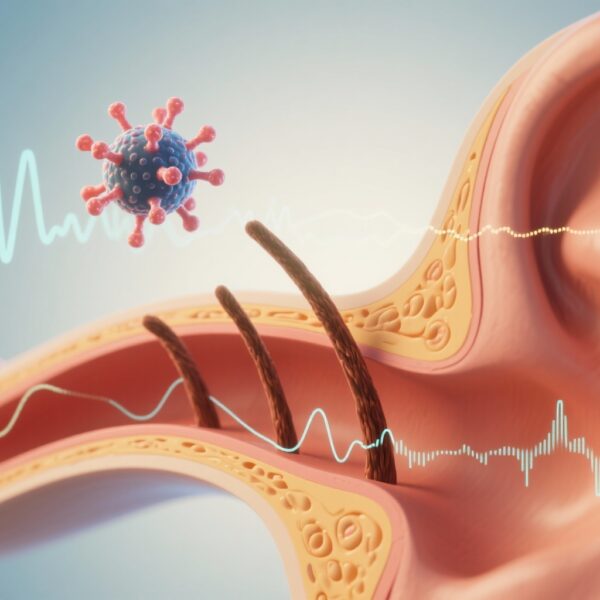Highlight
Lower relative oxygen extraction fraction (OEFr) within the pretreatment penumbra predicts substantial infarct growth despite successful endovascular reperfusion. DSC‑MRI–derived OEFr may serve as a practical biomarker to identify penumbral tissue at highest risk for irreversible injury after reperfusion.
Background and disease burden
Acute ischemic stroke due to anterior circulation large‑vessel occlusion (LVO) is a leading cause of mortality and long‑term disability worldwide. Mechanical thrombectomy and intravenous thrombolysis have dramatically improved outcomes for many patients; however, infarct progression and poor tissue outcome still occur in a subset of patients despite technically successful reperfusion. Identifying which salvaged perfusion tissue is viable versus destined to infarct despite recanalization remains an unmet clinical need. Existing clinical and imaging markers such as diffusion–perfusion mismatch and collaterals provide important information, but they do not fully explain heterogeneous tissue fate after reperfusion.
Oxygen extraction fraction (OEF) is a physiologic measure of how much oxygen is being extracted from the blood by brain tissue and reflects the balance between oxygen delivery and metabolic demand. Historically, quantitative OEF mapping has required positron emission tomography (PET), which is not broadly available in the acute setting. More recently, methods to estimate OEF from routinely acquired dynamic susceptibility contrast (DSC) perfusion MRI have been developed, enabling potential bedside translation of OEF as an ischemic viability biomarker.
Study design
This retrospective single‑center cohort study (University of California, Los Angeles; 2015–2020) evaluated whether baseline MRI‑derived OEF predicts infarct growth among patients with anterior circulation LVO who achieved successful reperfusion (Thrombolysis in Cerebral Infarction [TICI] ≥2b). Key inclusion criteria were pretreatment DSC‑MRI and posttreatment MRI within 48 hours of reperfusion. Imaging segmentation defined ischemic core as ADC ≤620 × 10−6 mm2/s and penumbra as tissue with time‑to‑maximum (Tmax) >6 s. DSC‑derived OEF values were normalized to the contralateral hemisphere to yield relative OEF (OEFr) for core and penumbra. The primary outcome was substantial infarct growth (≥10 mL). Secondary outcomes included continuous infarct growth volume and penumbra‑to‑infarct conversion ratio. Multivariable regression models assessed associations between baseline clinical/imaging variables (including OEFr) and outcomes.
Key findings
Population and outcomes
– Ninety‑nine patients were screened; 89 met inclusion criteria. All had anterior LVO and achieved TICI ≥2b reperfusion.
– Thirty‑three patients (37%) experienced substantial infarct growth (≥10 mL) on posttreatment imaging.
OEFr differences and univariate comparisons
– Patients with infarct growth had markedly lower penumbra‑OEFr on baseline MRI compared with those without infarct growth (P < 0.0001).
– Core‑OEFr differences between groups were less pronounced in reported comparisons, underscoring the specific predictive value of penumbral OEFr.
Multivariable associations
– Penumbra‑OEFr was independently associated with infarct growth: β = −2.9 (95% CI, −5.0 to −0.8); P = 0.007. This indicates that lower relative OEF in the penumbra predicted greater absolute infarct expansion.
– Penumbra‑OEFr was also associated with penumbra‑to‑infarct conversion ratio: β = −10.4 (95% CI, −19.6 to −1.2); P = 0.028.
Interpretation of effect sizes
– The negative β coefficients indicate that for each unit decrease in relative OEF, there was a statistically significant increase in infarct growth and conversion of at‑risk tissue to infarct. The authors report these relationships after adjustment for baseline variables, suggesting an independent predictive role for OEFr.
Clinical implications of results
– OEFr elevation in the penumbra was protective: patients with higher relative extraction fraction sustained less infarct growth after reperfusion.
– Conversely, a lower penumbral OEFr identified tissue that, despite restoration of large‑vessel flow, was prone to irreversible injury.
Mechanistic and biological plausibility
The physiology supports these findings. In the setting of hypoperfusion, viable tissue initially compensates by increasing OEF to preserve metabolism. Persistently elevated OEF reflects intact cellular machinery and metabolic responsiveness; such tissue is more likely to recover when upstream flow is restored. When OEF is low (or fails to increase), it may indicate exhausted metabolic capacity, severe microvascular failure, or mitochondrial dysfunction—states in which tissue is less likely to recover even after reperfusion. Thus, baseline penumbral OEFr integrates information about both perfusion and tissue metabolic reserve, offering complementary prognostic data beyond perfusion delay metrics alone.
Expert commentary and limitations
Strengths:
– Pragmatic approach: OEFr derived from DSC‑MRI uses widely available imaging sequences and could be incorporated into routine acute stroke workflows without PET.
– Clinically relevant cohort: Focused on anterior LVO patients who achieved successful reperfusion, a population in which predicting secondary infarct growth is particularly important.
– Quantitative outcomes: The study used both binary and continuous infarct growth measures and adjusted for covariates.
Limitations:
– Retrospective, single‑center design may introduce selection bias and limit generalizability.
– Modest sample size (n = 89) and event count could limit robustness of multivariable models and precision of effect estimates.
– DSC‑derived OEF methods, while promising, require further validation against gold‑standard PET OEF measures to confirm quantitative accuracy and to standardize processing pipelines across centers and vendors.
– Timing of posttreatment MRI was within 48 hours, which may permit variability in observed infarct size due to reperfusion injury, edema, or delayed infarction; a more standardized time point could reduce measurement noise.
– The study was restricted to anterior circulation LVO; findings may not apply to posterior circulation strokes or lacunar infarcts.
Context with contemporary evidence:
– Current guideline‑driven selection for reperfusion therapies emphasizes imaging selection (e.g., perfusion mismatch) and clinical factors (Powers et al., 2018). The DAWN and DEFUSE 3 trials demonstrated that advanced imaging selection can expand treatment windows and improve outcomes (Nogueira et al., 2018; Albers et al., 2018). OEFr offers a complementary physiologic marker that may refine risk stratification within existing imaging paradigms.
Clinical and research implications
Near‑term clinical application
– OEFr could be explored as an adjunct to standard perfusion‑diffusion assessment in comprehensive stroke centers. A low penumbral OEFr may identify patients at high risk for infarct expansion despite successful thrombectomy, prompting intensified monitoring, more aggressive hemodynamic support, or enrollment into trials of adjunctive neuroprotection or microcirculatory therapies.
Research priorities
1. Prospective multicenter validation: A larger, prospective study is needed to confirm the predictive performance of DSC‑derived OEFr across diverse clinical settings and imaging platforms.
2. Methodologic standardization: Harmonizing DSC acquisition parameters and OEFr calculation algorithms is essential to enable reproducible thresholds and automated reporting.
3. Gold‑standard comparison: Direct comparison with PET OEF in a subset of patients would establish accuracy and calibrate OEFr metrics.
4. Therapeutic trials: Randomized studies could test whether OEFr‑guided interventions (blood pressure targets, targeted neuroprotection, pharmacologic microvascular rescue) improve tissue outcomes beyond current standard care.
5. Threshold determination: Defining clinically actionable OEFr cutoffs (sensitivity, specificity, positive/negative predictive values) will be necessary before routine clinical adoption.
Practical takeaways
– OEFr measured from routine DSC‑MRI is a promising physiologic biomarker that predicts infarct growth after successful reperfusion in anterior LVO stroke.
– Higher penumbral OEFr appears to be protective; lower OEFr identifies penumbral tissue with limited metabolic reserve that is more likely to undergo infarction even after recanalization.
– These findings are hypothesis‑generating; clinicians should not yet use OEFr in isolation to change reperfusion decisions but may consider it for stratification in research settings.
Conclusion
This study contributes important physiologic insight into why some penumbral tissue fails despite prompt and effective large‑vessel reperfusion. DSC‑MRI–derived relative OEF of the penumbra holds promise as a clinically tractable biomarker to predict infarct growth and guide individualized post‑reperfusion care. Prospective validation, technical standardization, and outcome‑directed trials are necessary next steps before widespread clinical implementation.
Funding and clinicaltrials.gov
Funding sources were reported in the original publication. No clinicaltrials.gov identifier applies to this retrospective cohort analysis.
References
1. Asghariahmadabad M, Ismail A, Metanat P, et al. Oxygen Extraction Fraction on Baseline MRI Predicts Infarction Growth in Successfully Reperfused Patients. Stroke. 2025 Oct;56(10):3024-3033. doi: 10.1161/STROKEAHA.125.051270.
2. Powers WJ, Rabinstein AA, Ackerson T, et al. 2018 Guidelines for the Early Management of Patients With Acute Ischemic Stroke: A Guideline for Healthcare Professionals From the American Heart Association/American Stroke Association. Stroke. 2018;49(3):e46–e110.
3. Nogueira RG, Jadhav AP, Haussen DC, et al. Thrombectomy 6 to 24 Hours after Stroke with a Mismatch between Deficit and Infarct. N Engl J Med. 2018;378(1):11–21.
4. Albers GW, Marks MP, Kemp S, et al. Thrombectomy for Stroke at 6 to 16 Hours with Selection by Perfusion Imaging. N Engl J Med. 2018;378(8):708–718.
5. Astrup J, Siesjö BK, Symon L. Thresholds in cerebral ischemia — the ischemic penumbra. Stroke. 1981;12(6):723–725.



